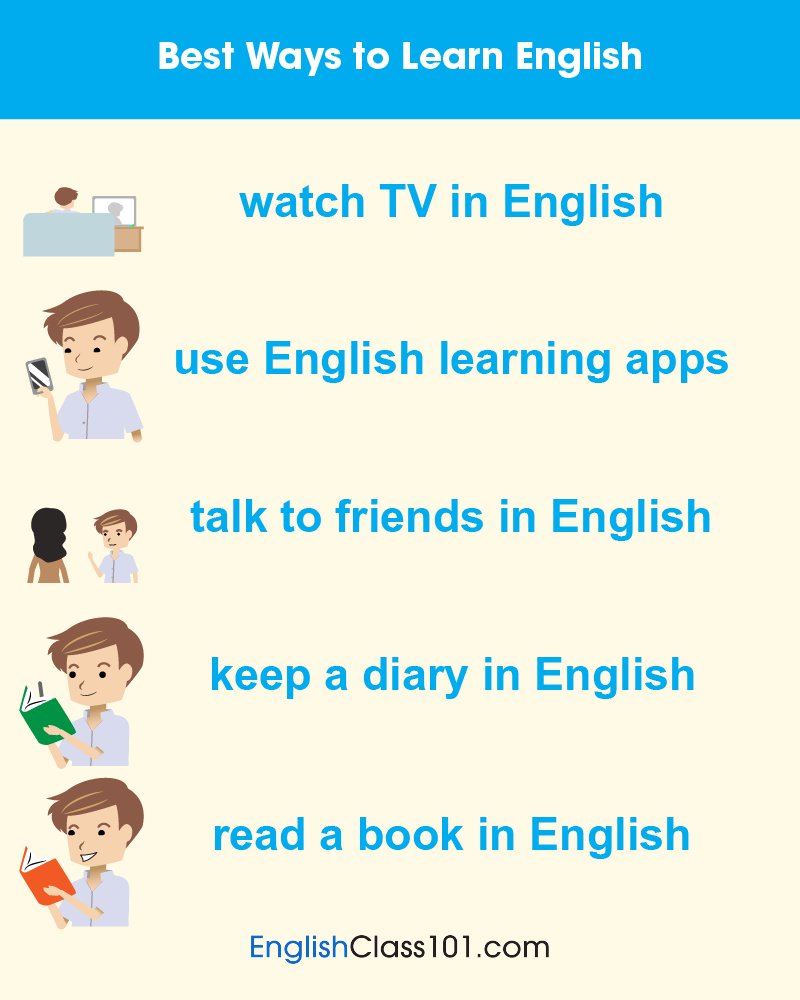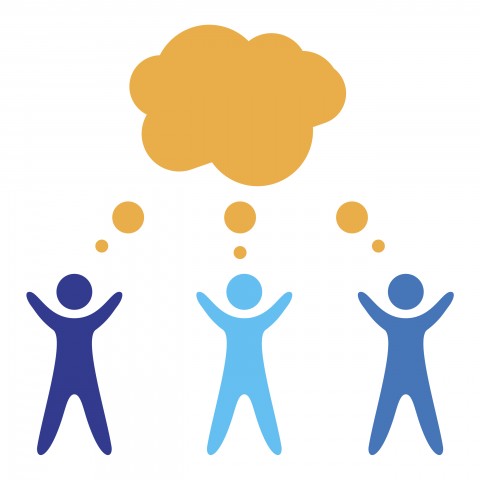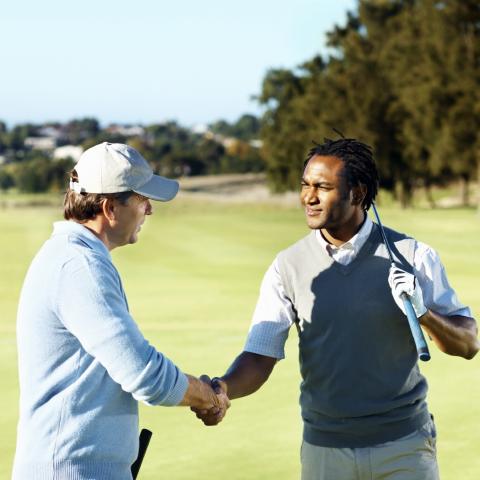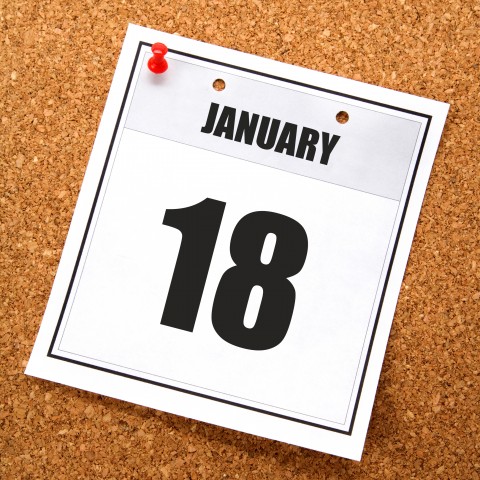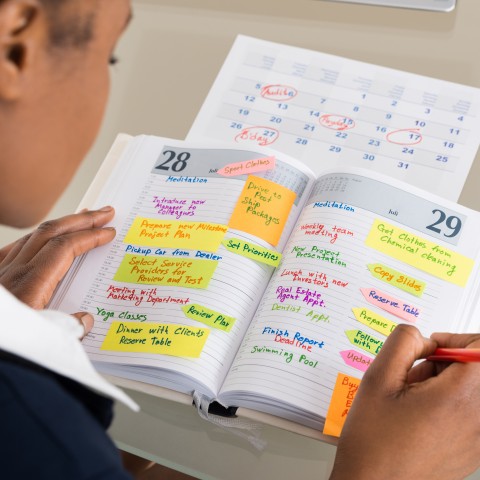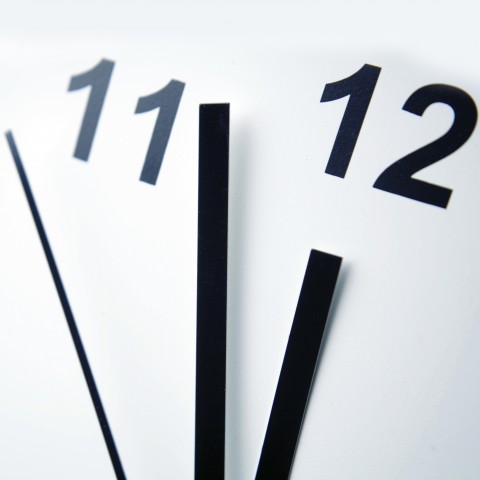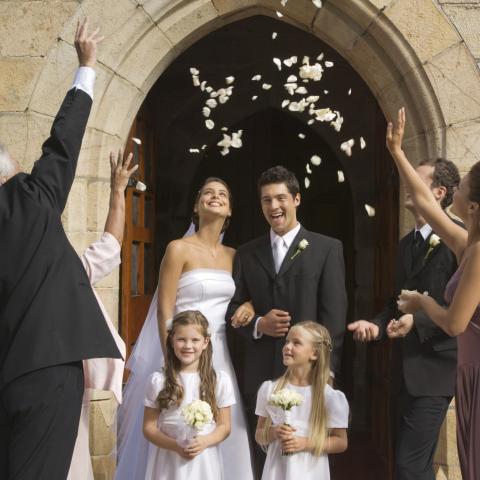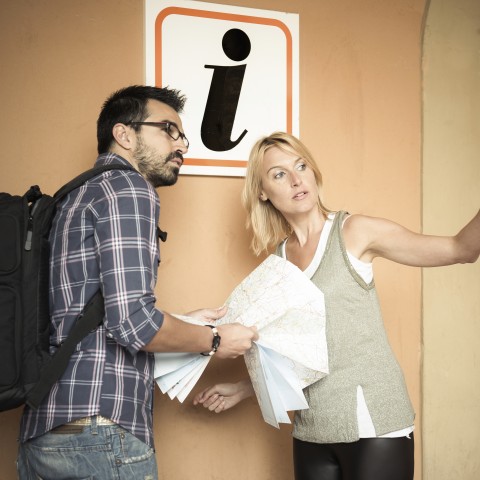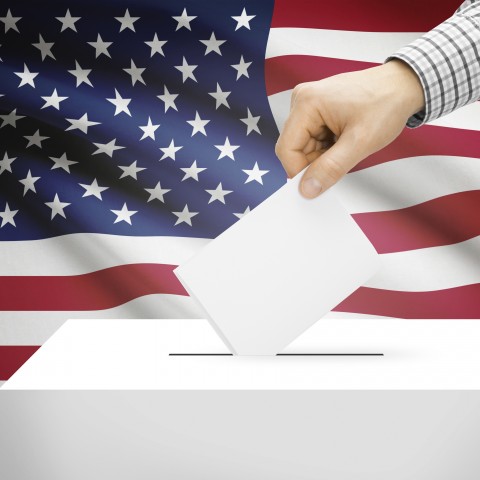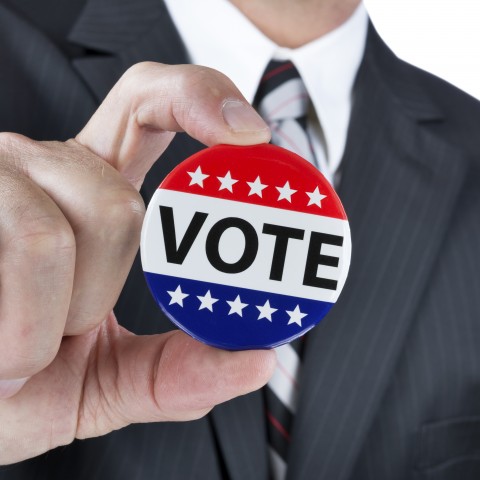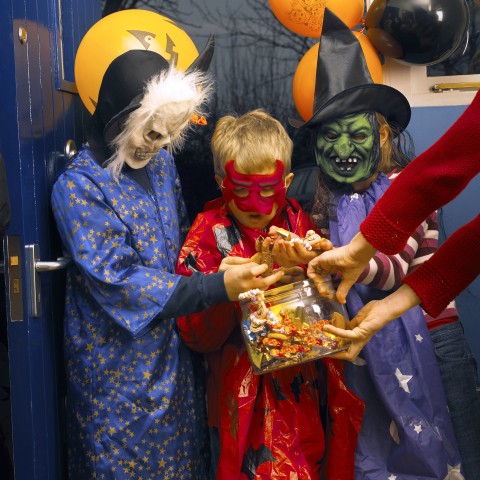Netflix and its competitor streaming services are dominating the television and movie industry (just check the Netflix stock!). It’s no surprise, considering the generally low prices, the variety of content there is to watch, and their flexible nature (like using Netflix downloads to watch on your phone!). And with so many quality Netflix Originals coming out, it’s becoming more and more addictive and binge-worthy. Netflix prices may be rising, but considering the quality stuff it’s bringing to the table nowadays, that’s understandable.
This also makes Netflix an excellent tool for learning a language through television shows and movies. There’s so much to watch, and definitely something for everyone considering that Netflix stocks up on quality shows—not to mention the availability of subtitles. Taking into account Netflix’s increasing cultural selections, you can also know that you’re learning your target language (English) in the context of the United States and English culture.
In this article, I’ll be discussing Netflix for learning English and give you an overview of some of the best shows on Netflix, and great Netflix movies. To get the most out of this article and your show-bingeing experience, visit the Netflix USA website (Netflix.com) and go to Netflix sign up on the Netflix USA website if you don’t yet have an account (or Netflix sign in if you do), as this will give you full access to Netflix content.
At EnglishClass101.com, we hope to make learning English both fun and effective, exciting, and insightful!

Table of Contents
- How Can You Use Netflix for Learning English?
- Netflix Watch List: The Best Netflix Series
- Netflix USA Movies: List of the Best Movies on Netflix
- Conclusion: How EnglishClass101 Can Help You Learn English Effectively
1. How Can You Use Netflix for Learning English?
It sounds a little outlandish, doesn’t it? That you can actually improve your English skills by enjoying some good, quality Netflix time. It is true, with a catch: To reap the greatest rewards this way, you’ll have to put in some effort.
That said, there are multiple ways that you can study English by watching shows on Netflix, and many things that make Netflix so convenient for this purpose!
1.) The Listening Factor: Actively and consistently listening to a new language helps expose you to various aspects of that spoken language in a fluid manner. This includes average talking speed, pronunciation, slang, and accents.
2.) Subtitles: Watching Netflix (USA) movies or shows with subtitles on allows you to read while listening, allowing you to practice two aspects of the language at once. It’s a good idea to try watching Netflix series or movies with subtitles in your own language, as well as subtitles in your target language (English).
3.) Writing Things Down: Watching Netflix series or movies to learn English also has the advantage of allowing you to write down unfamiliar words or phrases to look up later. While you can technically do this in any context, you can’t pause a real-time conversation to do this!
4.) Pause and Rewind: Speaking of pausing, using Netflix movies and series to learn English allows you the freedom to pause whenever you want. After you’ve written down your unfamiliar words, you can also rewind the show to have the characters say those words or phrases again. This way, you can practice your speaking skills by repeating after them until you think you have it down.
5.) Context: Another valuable asset of Netflix to learn English is that you can hear words and phrases in context. Sometimes, watching context on a screen to begin with makes facing real situations easier; this goes for language, too! While watching some of the best Netflix shows, be mindful of the context: How are the characters feeling? Where are they? What time period is the show set in? What are the characters’ backgrounds or current situations? Sometimes being able to grasp what words mean in context is better than having a textbook or dictionary definition!
6.) Entertainment: You’re more likely to study (or do anything, really) if you enjoy doing it. If you can make studying English something you look forward to and less of a chore, you’re more likely to continue. Further, having a positive outlook and good feelings about something, like studying, can improve the end result. Watching the best Netflix shows and movies provides great entertainment, and using Netflix as a study tool sure beats a textbook-only learning experience!
And trust me, with the shows outlined below in our Netflix list, you won’t be short on entertainment! Enjoy your comedy, drama, crime, sci-fi, and suspense, all while making progress toward your end goal! Go to Netflix, sign up, click to watch the best shows on Netflix, stock up on your favorite snacks, and there you are!
2. Netflix Watch List: The Best Netflix Series
Are you ready to begin watching a Netflix series in English? Longing to find a Netflix show that will keep you wanting more? I thought so. There’s just something about a quality series that’s magnetic.
Whether you’re looking for Netflix dramas, Netflix shows for teens, or Netflix comedies, you’ll find it here.
Here’s our list of the best shows on Netflix. Enjoy, and keep in mind that you can learn more about each one on the website. (This will be even easier with a Netflix download on your phone!)
1- The Office (U.S.) — 2005-2013
When you start watching U.S. Netflix, The Office may be the best place to start (and it’s leaving soon!).
The Office is a mockumentary-style sitcom, following the business lives and personal lives of multiple workers at the Dunder Mifflin Paper Company. Over the course of the show, you’ll delve deep into the hearts and minds of the characters (from the “world’s best boss” Michael Scott to the power struggle of quirky and often annoying Dwight Schrute). Expect office romances, subtle pranks, and awkward situations, all wrought by the motivations of unique but still highly relatable characters.
Famous Actors:
Steve Carell; Rainn Wilson; Jenna Fischer; John Krasinski; B.J. Novak; Mindy Kaling; Ed Helms; Paul Lieberstein; Angela Kinsey
Interesting/Useful:
The Office is considered one of the most successful TV series of all time, and for good reason. Not only is it absolutely hilarious and heartwarming, but it offers an honest and relatable look into the daily reality of many American office workers.
This show will also be helpful in learning slang, subtle jokes in English, and varying sentence structures and vocabulary depending on who’s speaking (the show does a great job of characterization in this way).
Common Expressions:
- “That’s what she said.”
- “Assistant to the regional manager.”
- “Bears. Beets. Battlestar Galactica.”
Be sure to watch the trailer for The Office to get a feel for the comedy that transcends other comedies, and use your Netflix login to start watching. This one alone is worth signing up to Netflix.
2- The Crown — 2016-Present
The Crown is about the life of Queen Elizabeth II, as well as the most significant events seen by the 20th century.
Famous Actors:
Claire Foy, Matt Smith, Vanessa Kirby, Eileen Atkins, Jeremy Northam, Victoria Hamilton
Interesting/Useful:
This Netflix show is so good that it has been nominated for twenty-six Primetime Emmy Awards for its first two seasons. The cast of this show also use a British dialect, which will expose you to a common English dialect.
Quotes from the Character Winston Churchill:
- “Where there is heroism, there will always be hope.”
- “People have to be angry at someone. But as leader, one cannot simply react to everything.”
You can watch the trailer for The Crown and find out more information on its Netflix page, if you want to get a glimpse of what to expect from this historical Netflix series.
3- Stranger Things — 2016-Present
This sci-fi television show, set in the 80s, follows the journey of a town as it discovers secret experiments. The show also touches on supernatural events and creatures, including an alternate realm they call “The Upside Down.” On Netflix, Stranger Things has become a sensation (with the exception of its most recent season)!
Famous Actors:
Winona Ryder; David Harbour; Matty Cardarople
Interesting/Useful:
This show is interesting as it’s set in the 1980s—this means that you’ll get a glimpse into U.S. life in the ‘80s, and will hear lots of ‘80s slang. While you won’t necessarily use ‘80s slang in day-to-day life now, it will give you some insight into what living in the past was like, and how it shaped today’s U.S. culture.
Quotes:
- “Mornings are for coffee and contemplation.”
- “Science is neat, but I’m afraid it’s not very forgiving.”
Not sure you’ll like this one? Watch the Season One trailer above to see what you’re in for!
4- A Series of Unfortunate Events — 2017-2019
This whimsical Netflix Original (based on the book series A Series of Unfortunate Events by Lemony Snicket) is one that both children and adults will enjoy. It follows the intelligent Baudelaire children in their attempt to find their missing parents, all while trying to get untangled from Count Olaf’s evil plots to gain their fortune. You’re sure to enjoy the somewhat foreseeable twists and turns (and frustrations!) that the Baudelaires go through, meeting their interesting family members, and discovering all about who their parents are. And, seriously, you’ll laugh and cry throughout this series as Netflix hones in on the fears we all experience. On Netflix, A Series of Unfortunate Events is as binge-worthy as it gets.
Famous Actors:
Neil Patrick Harris; Matty Cardarople; Patrick Warburton; Nathan Fillion; Usman Ally
Interesting/Useful:
This is a great show to watch if you want to improve your vocabulary, as “big” words are often incorporated into the show as a joke ( as the children “know what it means.” ) If you have kids and plan on using Netflix as part of your language-learning, A Series of Unfortunate Events is a great Netflix kids’ show that you’ll love just as much as they do!
Common Expressions:
- “We know what [that word] means.”
- “Life is a conundrum of esoterica.”
- “There’s no word to describe the feeling of waking up and knowing instantly that something is terribly wrong.”
5- Criminal Minds — 2005-2019
Now on Netflix, Criminal Minds, a long-running crime drama, follows a close-knit group of crime investigators, who must dig into the minds of serial killers in order to bring them down. In the process, it’s not uncommon for the team (or the viewer) to see a little bit of “serial killer” in themselves. As with any great drama, there are romances, hardships, character transformations, a lot on the line, and plenty of twists and turns.
Famous Actors:
Matthew Gray Gubler, A.J. Cook, Thomas Gibson, Kirsten Vangsness, Paget Brewster
Interesting/Useful:
Each episode of this Netflix crime drama begins with a poignant quote, which lays the foundation of the episode, and ends with another which helps to conclude it. This will not only be great for your vocabulary practice, but will give you additional insight into literature and art that Americans place much value on. You’ll also hear a lot of crime-related words and phrases.
Common Words:
- “Unsub”
- This is one of the most commonly used words in the shows across characters. It’s short for “Unknown Subject,” referring to someone the team is collecting information on or looking for in relation to a crime/killing.
6- The Good Place — 2016-2020
This is one of the funniest Netflix TV shows on this list, and it’s growing in popularity!
The Good Place begins when Eleanor Shellstrop (played by Kristen Bell) finds herself in “The Good Place” after she dies. She wonders how, considering the bad life she lived, until realizing it’s a mistake. As she meets other citizens of The Good Place and gets to know its keeper Michael (played by Ted Danson), secrets start to unravel that set the course of the show—all while Eleanor tries to become a better person. Be ready for some hearty laughs and heartfelt tears while watching.
Famous Actors:
Jameela Jamil; Kristen Bell; Ted Danson
Interesting/Useful:
One of the most fascinating aspects of this Netflix show is its use of filler curse words. In The Good Place, cursing is prohibited so any time someone (Eleanor) tries to do so, they can only say a filler word. This is outlined below.
Quotes & Common Expressions:
- “Shirt”
- “Fork”
- “Shrampies”
- Eleanor’s term for shrimp, which she absolutely loves.
- “I came up with hundreds of plans in my life, and only one of them got me killed.”
- “What a condescending bench.”
7- Hell on Wheels — 2011-2016
Now on Netflix, Hell on Wheels follows the construction of the First Transcontinental Railroad in the late 1800s. The main character, Cullen Bohannon, ends up at the construction site “Hell on Wheels” in his search to bring justice to his wife and child who were killed by Union soldiers. The show also follows an array of other characters—from the railroad’s investor Thomas Durant, to the mysterious “Swede,” prostitutes, and other railroad workers present.
If you’re looking for a great mix of drama, romance, adventure, suspense, and comedy wrapped up in a Netflix action series—all in a historical setting—this is the show for you.
Famous Actors:
Anson Mount; Colm Meaney; Robin McLeavy; Phil Burke; Christopher Heyerdahl; Common
Interesting/Useful:
This show takes place in a historical setting, making it a great way to familiarize yourself with U.S. history and the shaping of the country’s current culture (without being bored to tears). Throughout the show, phrases and concepts from this time period are used and brought up as well.
Fun Fact: Common, who plays Elam Ferguson in the show, is also a famous American rapper. On top of his work in acting and rapping, Common writes, models, and is a known philanthropist. His full name is Lonnie Corant Jaman Shuka Rashid Lynn.
Quotes:
- “No one tortures his enemy, if he must torture himself in the process.”
- “What’s good for the railroad is good for America.”
8- Frasier — 1993-2004
Frasier Crane moves to Seattle, Washington to become a radio psychiatrist and to get over his recent divorce, which allows him to spend more time with his brother, Niles (also a psychiatrist), and father, Martin Crane (a retired cop who soon moves in with Frasier). This sitcom follows the Cranes’ journey in reconnecting with each other, making new friends, and getting into all kinds of trouble and awkward situations, usually due to the Crane brothers’ competitive nature and pretentious personalities.
Over the course of the show, you’ll find that sometimes the Crane brothers plot with each other to accomplish their lofty goals, but most of the time they plot against each other in an attempt to outdo the other. For all of their similarities, the differences in their psychiatry practices and beliefs often cause a rift between them, as the show aims to highlight the differences between the Freudian (Frasier’s) and Jungian (Niles’s) psychiatries.
Famous Actors:
Kelsey Grammer; Jane Leeves; Peri Gilpen; David Hyde Pierce; John Mahoney
Interesting/Useful:
Because the show largely follows the lives of two fairly high-class men, it offers a unique perspective on life in the United States. Further, much of this show takes place in the 90s and early 2000s, and oftentimes you can see the shifts and changes in everyday life as the years pass. Lots of references are also made to literature, the arts, and psychology, and the Crane brothers often use French phrases to describe things.
Commonly Used Quotes:
- “I’m listening.”
- “Aw geez.”
- “I’m a bit psychic.”
9- Losers — 2019
Interested in Netflix documentaries? Losers is a short documentary series, with each episode covering the story of a different real-life athlete who failed, and failed again, but continued to persevere even if it didn’t mean getting the win or victory. In this mini documentary series, Netflix zeros in on the concept that winning isn’t the most important thing, and losing isn’t the worst thing that can happen. It also delves into the question of what success or failure really look like, and what they really mean. If you’re feeling down or need a little inspiration, you’ve found the goldmine.
Famous Athletes:
Jean van de Velde; Surya Bonaly; Michael Bentt; Pat Ryan; Mauro Prosperi; Aliy Zirkle; Jack Ryan
Interesting/Useful:
Some episodes are multilingual (e.g. some French dialogue with English subtitles, etc.), while still being largely an English-language show. It also features athletes and their stories from around the world.
Often-Used Words:
- “Loser”
- “Defeat”
- “Burden”
- “Boring”
10- Maniac — 2018
Maniac is a dark miniseries with psychological themes. Essentially, the story follows the lives of Annie Landsberg (Emma Stone) and Owen Milgram (Jonah Hill), both of whom are mentally unwell and for their own reasons sign up for a psychological trial. They meet, and find their lives intertwined in the weird and sometimes frightening hallucination/dream trials (induced by taking the pills “A” “B” and “C”). They discover themselves and each other over the course of the trial, all while the scientist taking over the experiment, Dr. Mantleray, deals with his own issues.
Famous Actors:
Emma Stone; Jonah Hill; Justin Theroux; Sonoya Mizuno; Gabriel Byrne; Sally Field
Interesting/Useful:
The storyline in this Netflix limited series is full of twists and turns, and is pure entertainment. The dialogue is humorous, with lots of play-on-words, sarcasm, and slang—great for hearing these things in the context of how people speak today. But between every line is raw emotion, which is a hard thing to come by in entertainment these days. Explore yourself as your explore their world.
Common Expressions:
- “When an addict dies, do you think it’s suicide?”
- “What’s wrong isn’t that I’m sick. It’s that I don’t matter.”
- “Life is simple as hell until you bring on a partner.”
Wanna watch a trailer that’ll give you goosebumps? Head over to Maniac’s Netflix page, watch the trailer, and get ready for your next binge-watch.
3. Netflix USA Movies: List of the Best Movies on Netflix
Are you more interested in good movies on Netflix? Now that we’ve gone over some spiffy Netflix series, we’ll move onto our Netflix movie list. We know that not everyone has time to dedicate to a Netflix series, and that some people prefer to watch one good movie instead.
Once you’ve found one that interests you, go to your Netflix sign in and watch away! Because when it comes to Netflix USA movies, they’re almost always worth it.
1- Bird Box — 2018
On Netflix, dark movies abound, and Bird Box is one of them.
One of the most popular Netflix Original movies, Bird Box tells the story of a post-apocalyptic world which begins with seemingly random mass violence and suicides in Russia that move to the United States. A pregnant woman named Malorie (Bullock), and a group of survivors she joins, quickly discover that looking at a supernatural force causes a person to immediately go insane and kill themself. Eventually, the woman is alone with two children, who must all traverse the river blindfolded until they reach safety, encountering numerous dangers on the way.
Famous Actors:
Sandra Bullock; Trevante Rhodes; John Malkovich; Danielle Macdonald; Sarah Paulson
Interesting/Useful:
One of the most interesting aspects of how language is used in this Netflix show is the use of “Boy and “Girl” as children’s names. Not only is it a reflection of Malorie’s state of mind and emotions regarding motherhood, but it shows a unique depth of the English language that’s not often explored: names as placeholders.
Quotes:
- “If you look, you will die. Do you understand?”
- “She stepped out of the car and ran into the street, and she’s not suicidal.”
- “Life is more than just what is. It’s what it could be. What you could make it.”
Watch the Bird Box (Netflix) trailer on its Netflix page, and see what you’re in for! When it comes to good movies on Netflix, this is one of the most popular, after all.
2- Monty Python and the Holy Grail — 1975
This is a British movie which focuses on the Arthurian legends. In the film, King Arthur and “Patsy” his squire search for men to join the Knights of the Round Table, and later go on to search for the Holy Grail which leads them through a series of trials, temptations, and humorous situations. The film makes great use of play-on-words, and infuses humor both under the surface and more overtly. That said, the type of humor in this show isn’t for everyone.
Famous Actors:
Graham Chapman; John Cleese; Terry Gilliam; Eric Idle; Terry Jones; Michael Palin
Interesting/Useful:
Monty Python and the Holy Grail is one of the many productions by Monty Python, a group dedicated to comedy sketches. Another one of its popular movies is Life of Brian (also on Netflix).
Quotes:
- “Ask me the questions, bridgekeeper. I am not afraid.”
- “We want…a shrubbery!”
- “It’s just a flesh wound!”
Watch the Monty Python and the Holy Grail trailer, and then head over to Netflix to watch one of the best comedy movies of its time.
3- Black Mirror: Bandersnatch — 2018
Netflix’s Black Mirror: Bandersnatch is a sci-fi “interactive” movie, where you control the actions of the main character Stefan Butler, an aspiring “choose-your-own-adventure” video game programmer. The film takes place in England during the ‘80s, and features multiple possible endings (and variations of those endings) based on which choices you make—from choosing which breakfast cereal to eat (does it really make a difference? I have no idea.) to deciding whether or not to pour tea on Stefan’s laptop when he gets frustrated. Here, Netflix presents a very unique (and sometimes dark) part of its contributors’ personalities in the best way possible.
Famous Actors:
Fionn Whitehead, Will Poulter, Asim Chaudhry, Craig Parkinson, Alice Lowe
Interesting/Useful:
Making decisions for the main character throughout the show that affect the outcome(s) is good for practicing both listening and reading skills, as well as decision-making in English. It’s also fascinating to reflect on Netflix’s price for making this interactive movie: a lawsuit from the Choose Your Own Adventure publishing company, Choosesco.
Common Expressions:
- “You’re just a puppet. You are not in control.”
- “There’s messages in every game. Like Pac-Man. Do you know what PAC stands for? P-A-C: ‘program and control.'”
Watch the Black Mirror: Bandersnatch trailer on its Netflix page before leaping in for yourself!
4- The Boy in Striped Pajamas — 2008
A list of good movies on Netflix wouldn’t be complete without mentioning The Boy in Striped Pajamas.
The Boy in Striped Pajamas, based on the book by John Boyne, follows the story of a nine-year-old boy named Bruno who grows up in Germany during WWII. After his father’s promotion to Commandant, they move to a home beside a Jewish concentration camp in Poland.
When out exploring one day, Bruno discovers and befriends a young boy on the other side of a fence who wears what he thinks are striped pajamas (which are really prison clothes). During the course of their friendship, Bruno learns more and more about the poor treatment of Jews (some of his house servants are Jews) without realizing who his new friend is.
As far as Netflix USA movies go, this is one of my favorites!
Famous Actors:
Asa Butterfield; Jack Scanlon; Vera Farmiga; David Thewlis; Rupert Friend; David Hayman
Interesting/Useful:
This movie offers a unique perspective and story about WWII, and shows glimpses of what life was like back then. You’ll also hear a range of accents and dialects from the different characters, making it a realistic option for learning to understand nuances in the English language.
Common Expressions:
- “I don’t understand. One man caused all this trouble?”
- “We’re not supposed to be friends, you and me. We’re meant to be enemies. Did you know that?”
After watching the trailer, you’ll definitely want to know how things unfold (or fall apart…). So check it out on Netflix today! It truly is one of the best movies on Netflix, especially for the history lover or culture aficionado.
4. Conclusion: How EnglishClass101 Can Help You Learn English Effectively
We hope you enjoyed our list of the best Netflix shows and movies, and that we helped you find the perfect binge fix for your English-learning journey! Netflix prices are more and more beginning to reflect what you get, don’t you think?
Which of our picks most interested you, and why? Did we leave out any good ones? Let us know in the comments!
On EnglishClass101.com, we have an array of blog posts like this one to boost your English skills and immerse you in U.S. culture. You can also check out our free vocabulary lists to expand your word bank, chat with fellow English learners on our community forum, and learn English one-on-one with your own personal teacher using our MyTeacher program (available to Premium Plus members). At EnglishClass101.com, there’s something for every learner and every learner is able to flourish! Get started today!
In the meantime, get your Netflix login ready and watch the best movies on Netflix, or find a new favorite Netflix series! None of these catch your interest? Check out Netflix.com or an app for Netflix downloaded on your phone to find more options.





